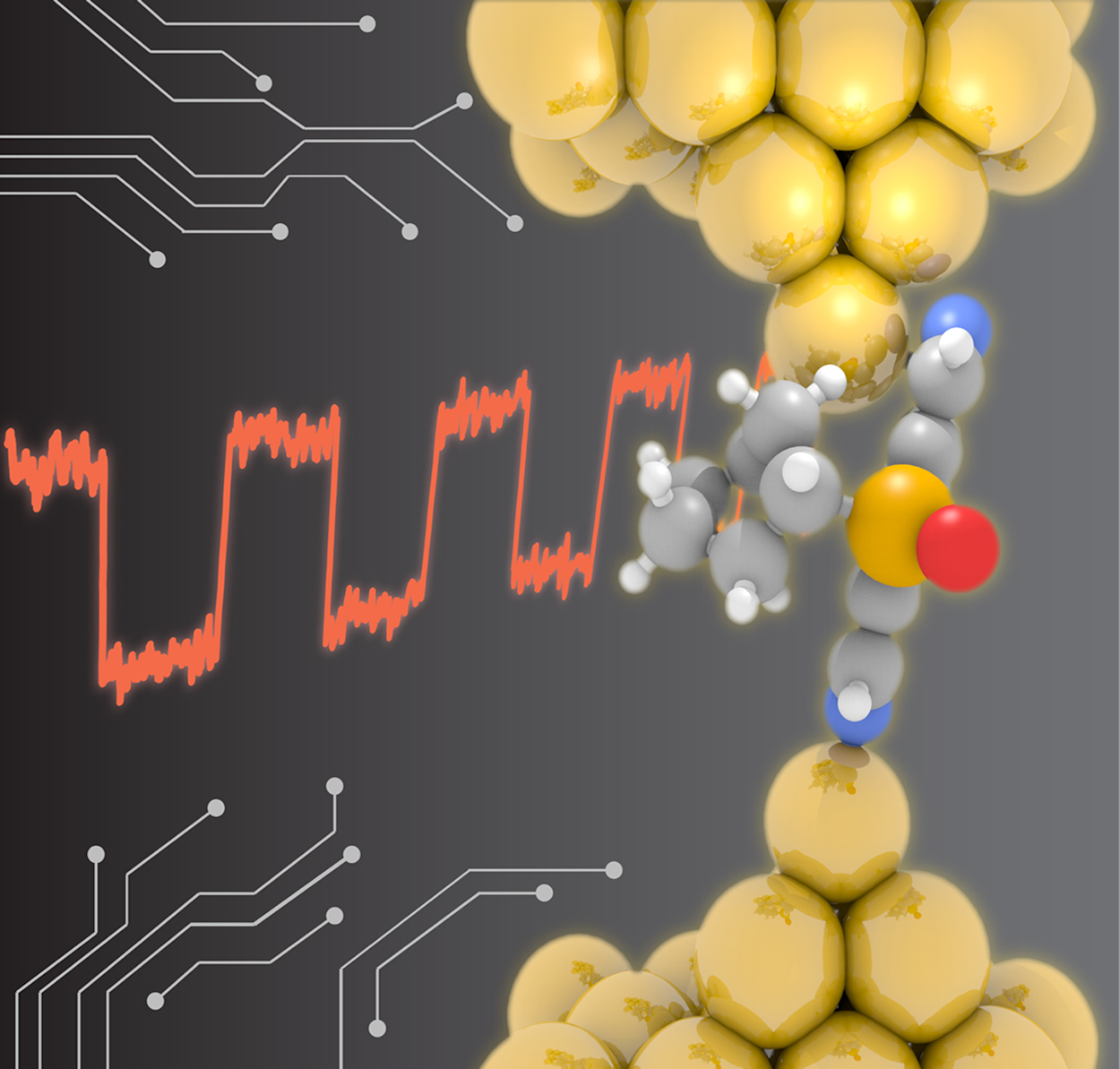

Fundamental Molecular Electronics
In a metal-molecule-metal junction a small modification of the molecular backbone can lead to a dramatic change in its behaviour. By synthesising families of archetypal molecular
wires such as oligo-ynes, bipyridyls, alkanes, etc. and measuring their conductance as a function of length, bias, electrochemical potential and electrode separation
we aim at a better understanding of the fundamental properties of charge transport, highlighting quantum effects unique to the nanoscale.
Recent publications:
Angewandte Chemie (International Edition) (2019)
Journal of Physical Chemistry Letters (2018)
RSC Advances (2018)
Nanoscale (2018)
Nanoscale (2018)
Angewandte Chemie (International Edition) (2017)
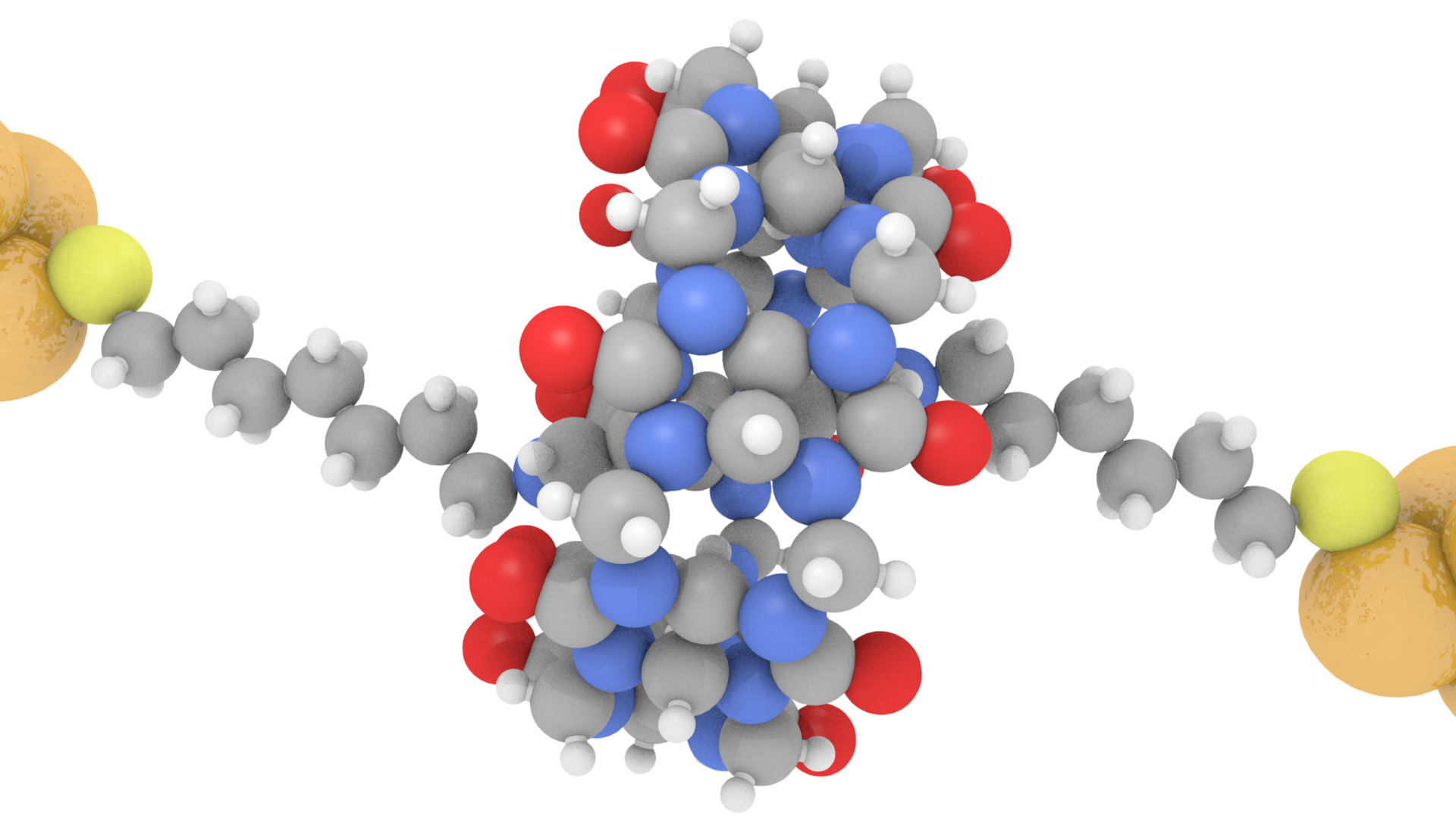
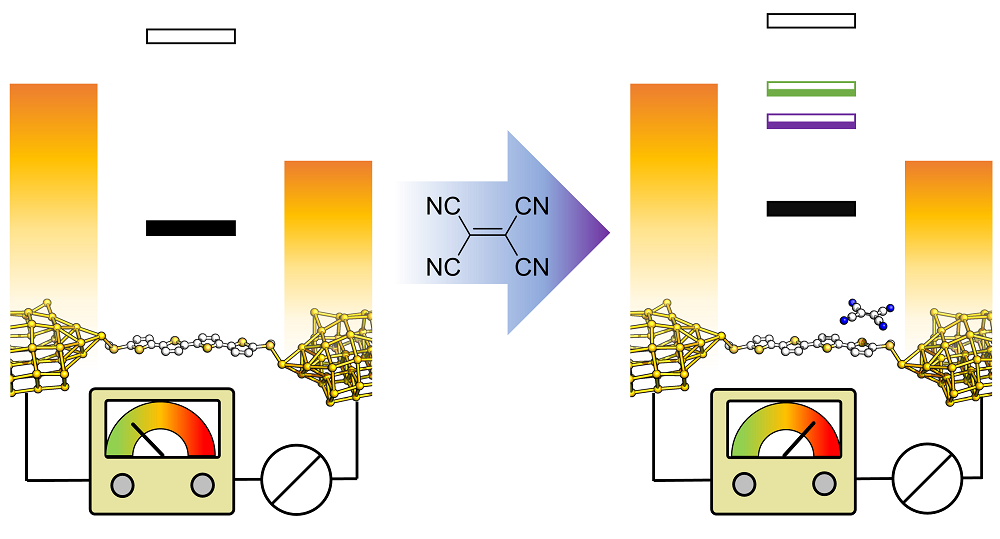
Supramolecular Electronics
Although an isolated molecule within a junction, and its contacts to the electrodes, must necessarily be affected by
interactions with solvent molecules, and/or ambient water, this has provoked few detailed studies. The study of conductance behaviour of
supramolecular assemblies of molecules, such as host-guest complexes or charge-transfer complexes, and of the solvation shell surrounding
a metal-molecule-metal junction can lead to the use of single-molecule devices as sensors or chemFETs.
Recent publications:
Chemical Science (2019)
Journal of Chemical Physics (2017)
Nanoscale (2016)
ACS Nano (2016)
Nanoscale (2015)
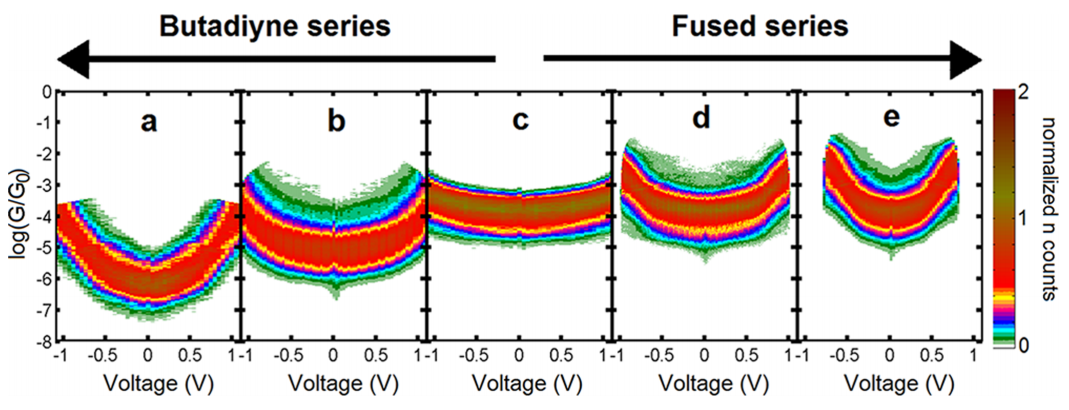

Porphyrin wires for nanoelectronics
Oligo-porphyrins can mediate electron transmission over unusually long distances with low attenuation, making them attractive targets as molecular wires.
Thus they could be utilised in the electrical "wiring" of sub-10-nm electronic devices and also in photo-voltaic systems for charge transport and separation.
We have been examining charge transport in both linear, fused and barrel-shaped oligo-porphyrins looking for unusual properties in their mechanism of conduction.
Recent publications:
Journal of the American Chemical Society (2018)
Journal of the American Chemical Society (2018)
Nature Nanotechnology (2011)
Advanced Materials (2011)

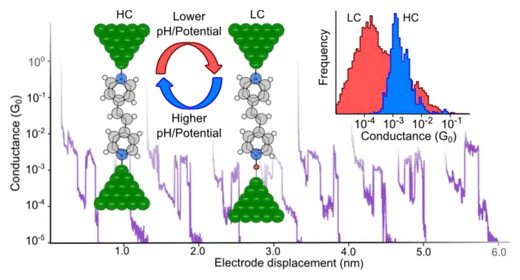
Singe-Molecule Electrochemical Gating
We pioneered the measurement of single molecule conductance in electrochemical environments. This has enabled detailed investigation
of charge transfer through molecules in electrochemical environments. Large changes in molecule conductance can occur with electrode potential,
but the form of these changes is very sensitive to molecular structure, its redox properties, and the surrounding nanoenvironment.
Recent publications:
Nano Letters (2018)
Faraday Discussions (2016)
Journal of the American Chemical Society (2015)
Journal of the American Chemical Society (2012)
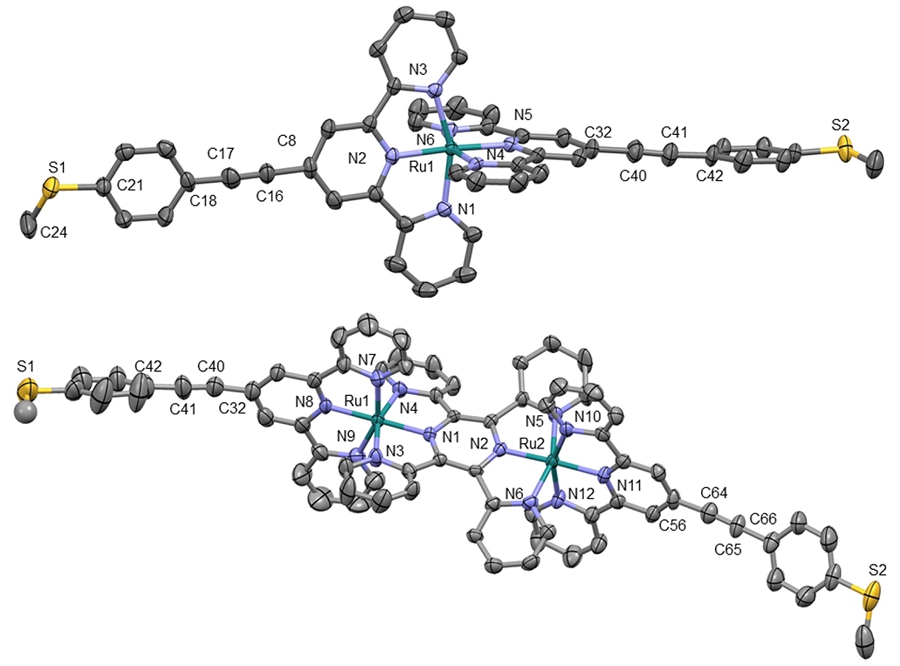
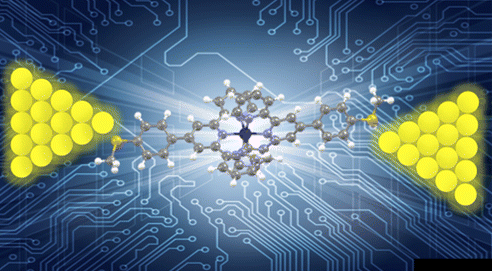
Organometallic molecular wires
Metal complexes have proven to be valueble for evaluation of many properties of charge transport in molecular wires, and
a wide range of metal ions can be incorporated. This allows a selection of physical and chemical
properties relating the charge, size, and redox or magnetic properties of the complex and the
ligand shell to be readily examined. We study such complexes to better understand these properties, and their
redox behaviour can be used to gate molecular conductance, with a FET-like behaviour.
Recent publications:
Nanoscale (2017)
Chemistry: A European Journal (2017)
Organometallics (2016)
Inorganic Chemistry (2016)
Inorganic Chemistry (2015)
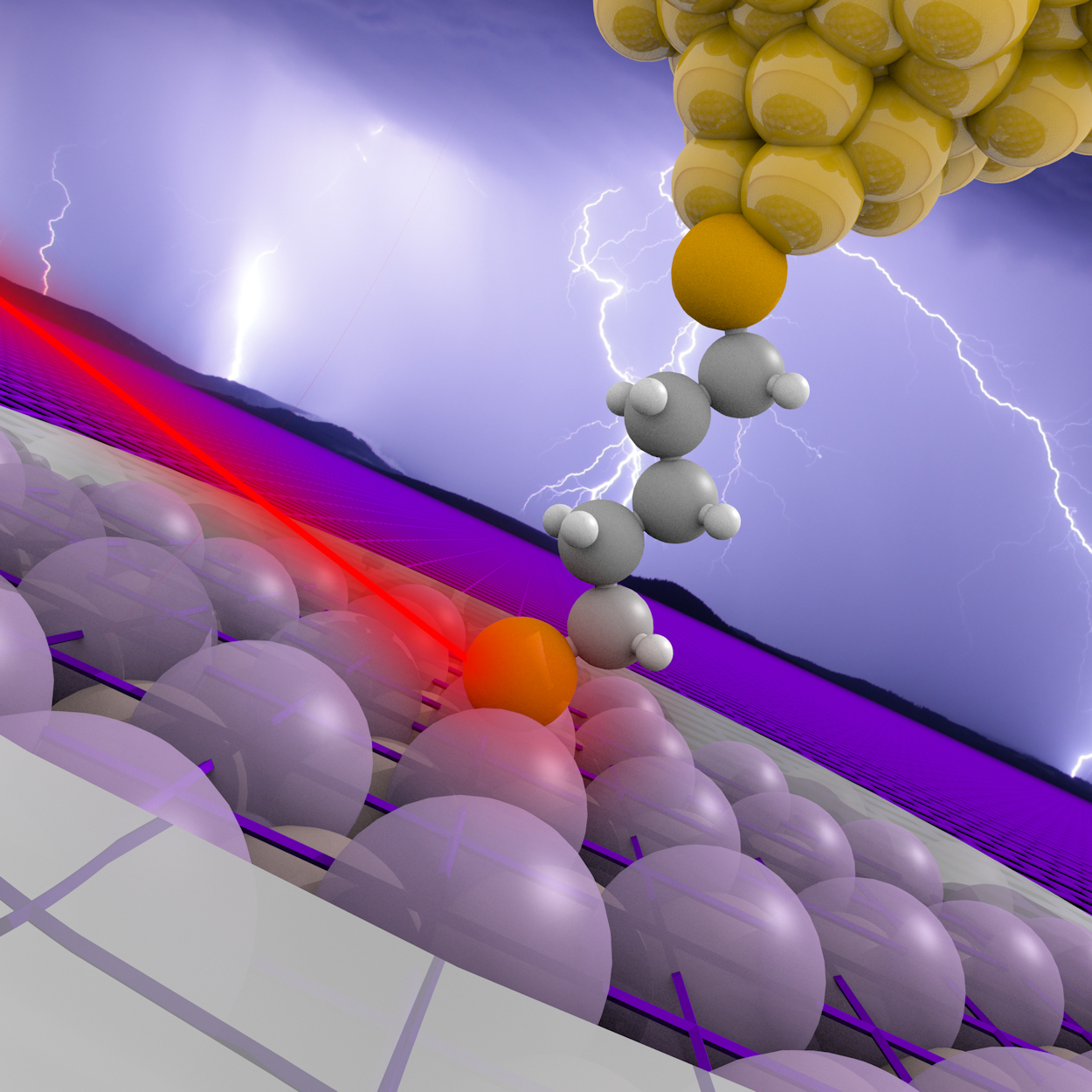
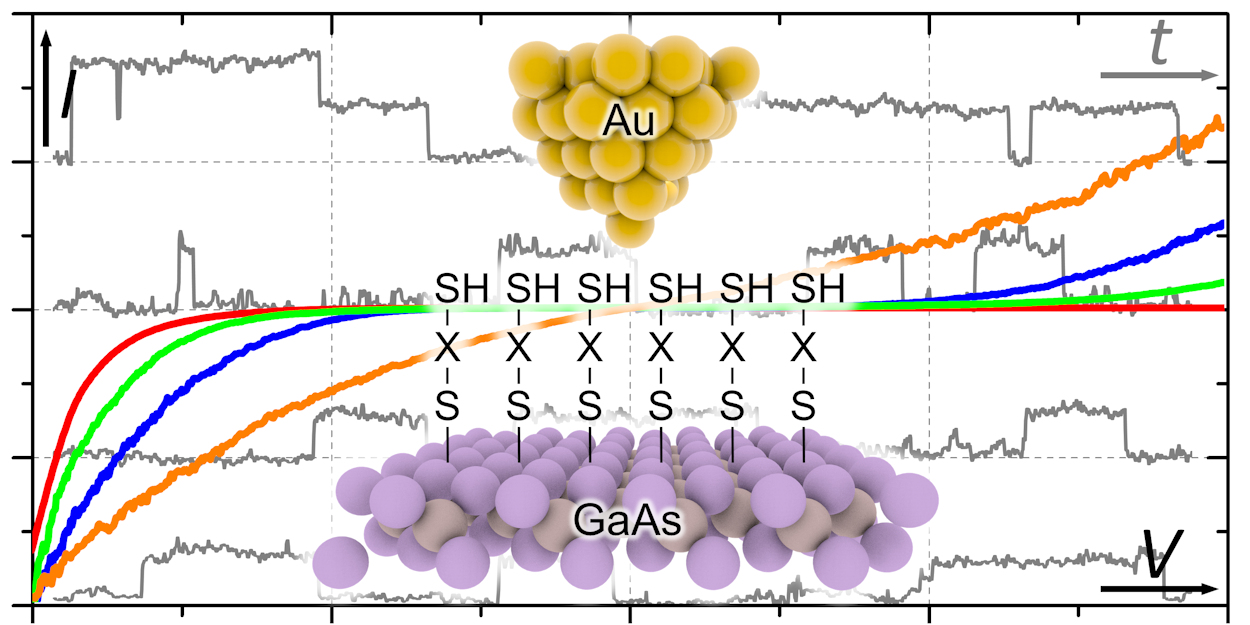
Single-Molecule Photo-spintronics
Single-molecule spintronic measurements promise to yield a fundamental understanding of spin transport in organic systems and will help establish whether organic
spintronic devices are a practical proposition. Our goal is to measure the photocurrent from a semiconductor (GaAs) to a metal through a single molecule and its
dependence on the light polarization, the metal magnetization direction (for ferromagnetic electrodes) and the applied bias. A signal that depends only on the polarization
relative to the magnetization direction will be evidence for spin-dependent tunnelling. We aim to understand the transport and magneto-transport properties of
semiconductor-molecule junctions, focusing on molecules where the charge transfer is by coherent tunnelling, rather than hopping conduction.
Recent publications:
Faraday Discussions (2018)
Nano Letters (2017)
Nano Letters (2017)
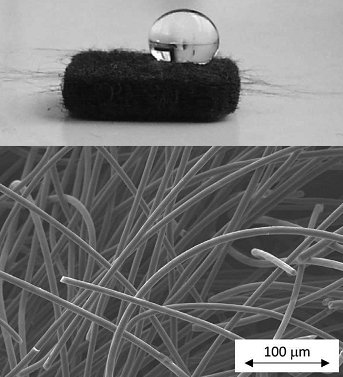
Surface Electrochemistry and Modified Electrodes
Recent publications:
Journal of Electroanalytical Chemistry (2015)
Electrochimica Acta (2016)